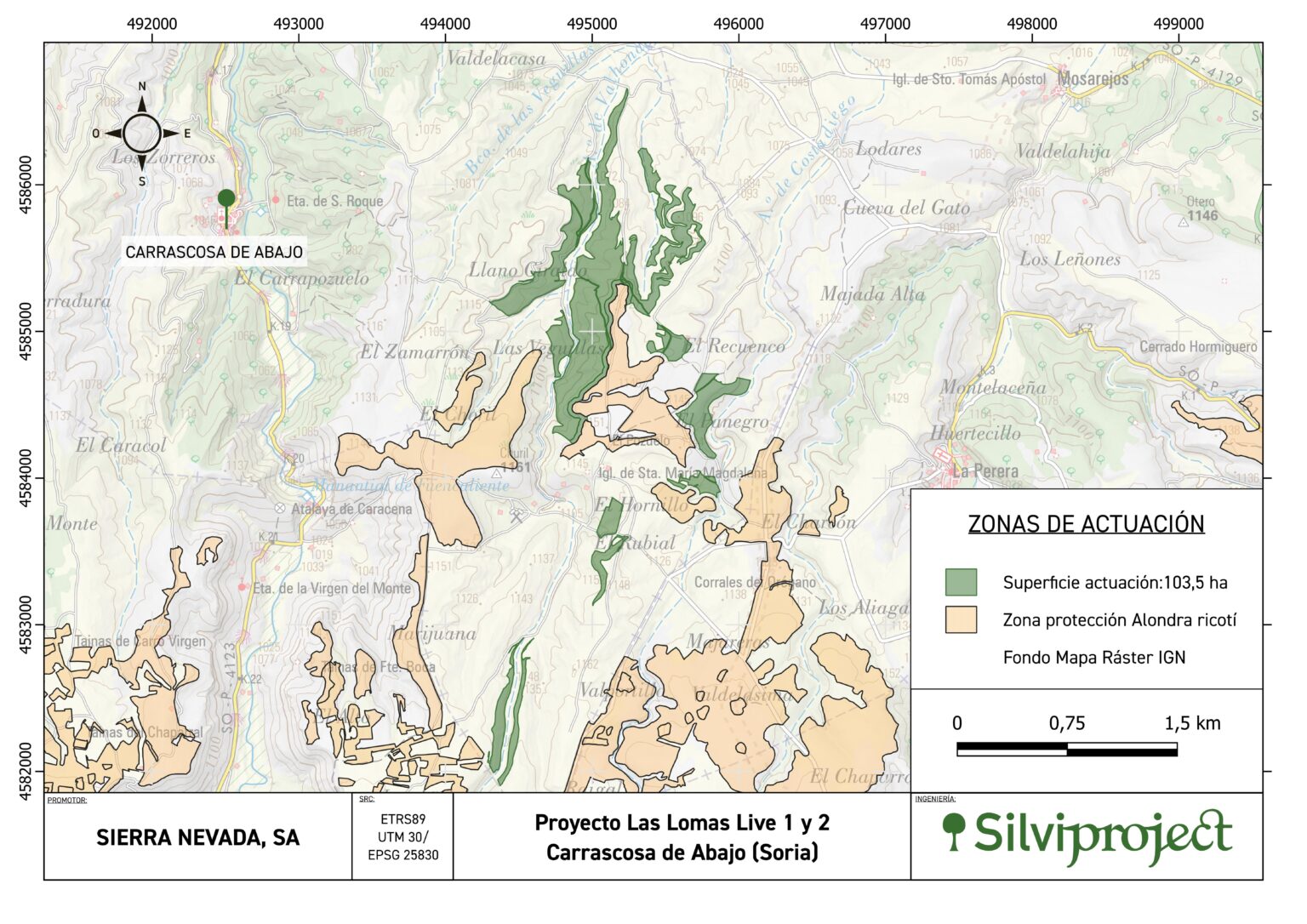Sure! Here’s the translation into American English:
—
A new reforestation project in Carrascosa de Abajo has received favorable environmental authorization, becoming a benchmark in sustainable resource management and the fight against climate change. The initiative, driven by the company Sierra Nevada, S.A. and technically directed by Silviproject, S.L., aims to establish a mixed forest mass capable of absorbing over 200,000 tons of carbon dioxide (CO2) over a period of 35 years. This plantation not only seeks to mitigate the effects of climate change but also to reduce the risk of fires and floods in the region.
Known as “Las Lomas Live 1 and 2,” the project has undergone a rigorous simplified environmental assessment process in which various administrations and social groups have collaborated. As a result, the area of intervention has been reduced from 136 to 119.3 hectares, excluding regions with high ecological value. Additionally, specific measures have been implemented to protect the ricotí lark, an endangered bird species that inhabits areas near the project.
Among the species to be planted are sabinas, oaks, and Atlas cedars. While the latter are considered non-native, they have a fossil history in the Iberian Peninsula. An initial density of 1,283 trees per hectare is planned, aiming to diversify the ecosystem and minimize environmental impact through manual forestry techniques.
Sierra Nevada and Silviproject are implementing Nature-Based Solutions (NbS), which focus on restoring ecosystems while respecting natural processes, unlike conventional methods that rely on artificial infrastructures. This comprehensive approach will not only promote an effective carbon sink but also enhance soil quality, increase water infiltration, and improve ecological connectivity in the area.
The protection of the ricotí lark has been a key element in obtaining project authorization. Buffer zones have been established that restrict certain activities during the bird’s breeding season, thus ensuring its conservation.
The Atlas cedar, chosen for this ambitious project, is recognized for its carbon sequestration capability and adaptability to climate change, making it an ideal species to address negative environmental impacts. The planting and monitoring strategy promises not only a greener future but also more effective management of the forest perimeter, increasing resilience against adverse climate phenomena.
—
Let me know if you need any adjustments!
via: MiMub in Spanish
